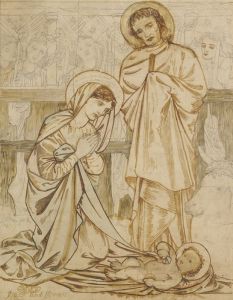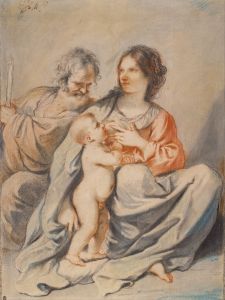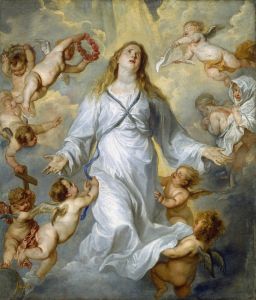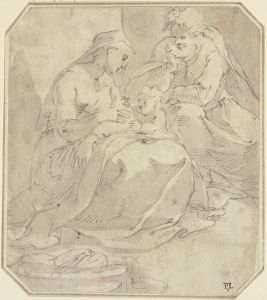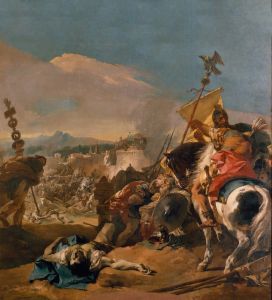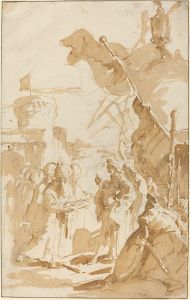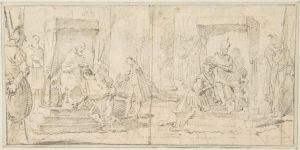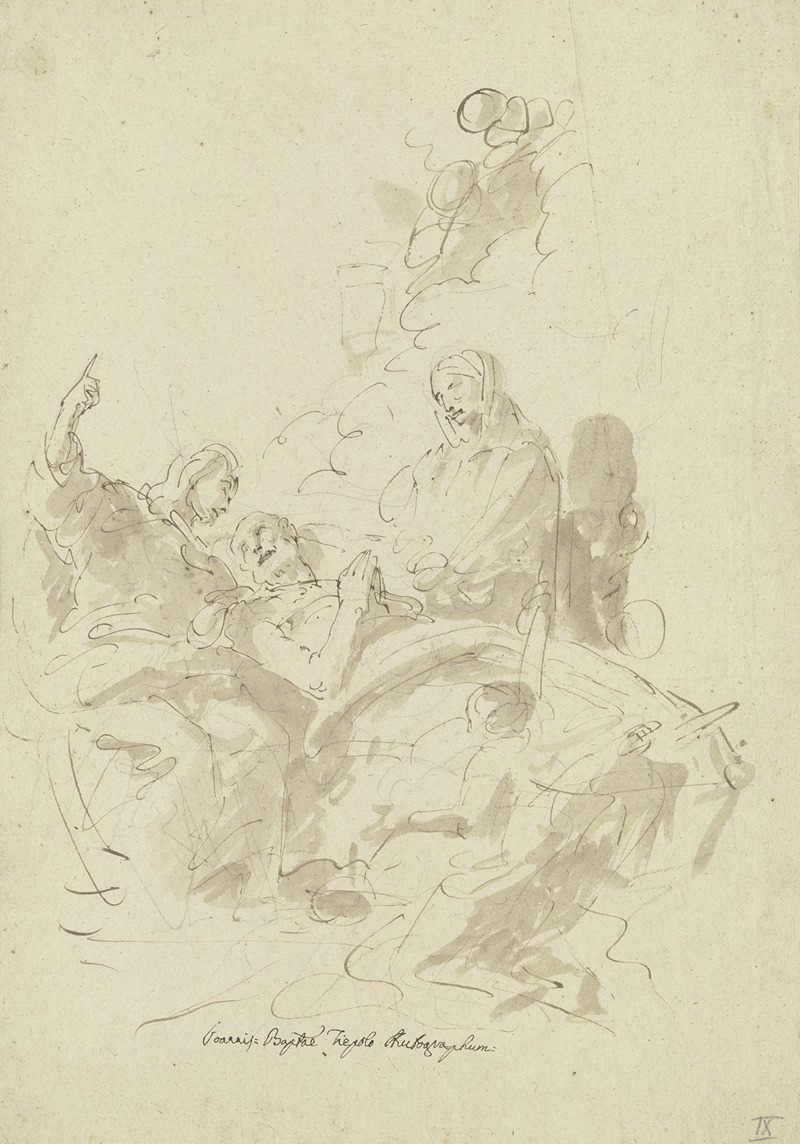
Der Tod des Heiligen Joseph
A hand-painted replica of Giovanni Battista Tiepolo’s masterpiece Der Tod des Heiligen Joseph, meticulously crafted by professional artists to capture the true essence of the original. Each piece is created with museum-quality canvas and rare mineral pigments, carefully painted by experienced artists with delicate brushstrokes and rich, layered colors to perfectly recreate the texture of the original artwork. Unlike machine-printed reproductions, this hand-painted version brings the painting to life, infused with the artist’s emotions and skill in every stroke. Whether for personal collection or home decoration, it instantly elevates the artistic atmosphere of any space.
Giovanni Battista Tiepolo, an eminent Italian painter of the 18th century, is renowned for his grandiose and vivid frescoes and canvases that epitomize the Rococo style. Among his extensive oeuvre is the painting "Der Tod des Heiligen Joseph" (The Death of Saint Joseph). This work reflects Tiepolo's mastery in capturing religious themes with emotional depth and dramatic flair.
The painting depicts the deathbed scene of Saint Joseph, the earthly father of Jesus Christ and the husband of the Virgin Mary. In Christian tradition, Saint Joseph is revered as a model of piety, humility, and fatherly care. The scene is a poignant moment, capturing the final moments of a life dedicated to faith and family. Tiepolo's interpretation of this event is both intimate and grand, a testament to his ability to convey complex emotional narratives through art.
In "Der Tod des Heiligen Joseph," Tiepolo employs his signature use of light and color to create a sense of divine presence and serenity. The composition is carefully structured to draw the viewer's eye towards the central figures. Saint Joseph is depicted lying on his deathbed, surrounded by Mary and Jesus, who are shown in a state of tender concern and compassion. The use of light in the painting is particularly noteworthy; it bathes the figures in a warm glow, suggesting the presence of divine grace and the sanctity of the moment.
Tiepolo's skillful use of color enhances the emotional impact of the scene. The soft, muted tones of the background contrast with the more vibrant hues of the figures' garments, creating a visual hierarchy that emphasizes the central characters. The artist's delicate brushwork and attention to detail are evident in the rendering of facial expressions and gestures, which convey a sense of tranquility and acceptance.
The painting is also notable for its composition, which reflects Tiepolo's understanding of spatial dynamics and his ability to create a sense of depth and movement. The figures are arranged in a harmonious balance, with the diagonal lines of the composition leading the viewer's gaze across the canvas. This dynamic arrangement not only enhances the visual appeal of the painting but also reinforces the narrative of the scene, guiding the viewer through the emotional journey of the characters.
"Der Tod des Heiligen Joseph" is a prime example of Tiepolo's ability to blend religious iconography with the stylistic elements of the Rococo period. His work is characterized by its elegance, lightness, and a sense of movement, all of which are evident in this painting. Tiepolo's contribution to the art world is significant, as he was able to infuse traditional religious subjects with a fresh perspective, making them accessible and engaging to contemporary audiences.
The painting is housed in the Alte Pinakothek in Munich, Germany, where it continues to be admired by art enthusiasts and scholars alike. It remains an important piece in the study of Tiepolo's work and the broader context of 18th-century European art. Through "Der Tod des Heiligen Joseph," Tiepolo not only pays homage to a revered saint but also showcases his exceptional talent in capturing the essence of human emotion and divine presence.





